 |
|||||||||||||||||||||
|
|
|||||||||||||||||||||
|
NTT around the World Vol. 10, No. 3, pp. 52–58, Mar. 2012. https://doi.org/10.53829/ntr201203ov1  NTT DATA (CHINA)
|
|||||||||||||||||||||
| † | 8F, Tower A, Phoenix Place, 5A Shuguangxili, Chaoyang District, Beijing P. R. China, 100028 |
|---|
1. Overview of NTT DATA (CHINA)
1.1 Presence of NTT DATA in China
NTT DATA has had a presence in China since 1995. It has 15 entities (mainly shown as Fig. 1) with major capital that employ approximately 4000 people, or over 20 entities if minor-capital ones are included. It also has significant presence in 12 cities in mainland China covering Northeast China, North China, East China, South China, and Central China (Fig. 2).
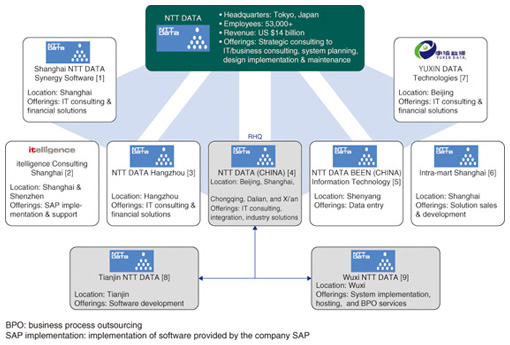
Fig. 1. Major capital entities of NTT DATA in mainland China.
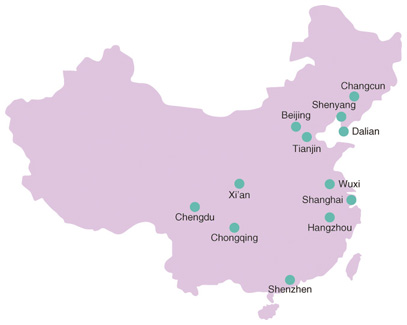
Fig. 2. NTT DATA's presence in mainland China.
1.2 Overview of NTT DATA (CHINA)
NTT DATA (CHINA) Co. Ltd., the regional headquarters (RHQ) for China, is located in Beijing (Fig. 3). It was formed in December 2011 through the reorganization of the RHQ with the former NTT DATA (CHINA) and Beijing NTT DATA, and Fumio Kanda was appointed as its Chief executive officer (CEO). The company name is currently still Beijing NTT DATA Systems Integration Co. Ltd., but it will officially change to NTT DATA (CHINA) Co. Ltd. in March 2012.

Fig. 3. NTT DATA (CHINA).
The purpose of the reorganization was to enhance presence and capabilities for the local Chinese information technology (IT) market and consolidate the human resource pool for offshore development by enhancing the governance of all entities in China.
1.3 Corporate roadmap for NTT DATA (CHINA)
Since 1995, NTT DATA (CHINA) has been gaining experience by growing from serving local Chinese business individually to providing offshore software development for Japanese clients.
To ensure adequate resources for ongoing projects while still keeping enough in reserve, it has been increasing its number of full-time employees by continuously recruiting (Fig. 4), establishing subsidiaries, conducting mergers and acquisitions, and maintaining tight relationships with strategic partners.
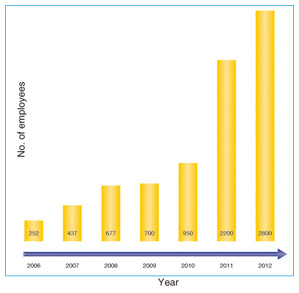
Fig. 4. Growth of NTT DATA (CHINA)'s resources.
Training in technical knowledge and skills, foreign languages (Japanese and English), industry and domain knowledge, and project management is planned and implemented with high priority. CMM/CMMI (capability maturity model, capability maturity model integration) has been introduced and promoted in the organization, and the organization was certified with CMMI ver. 1.1 level 4 in 2006. Security policies and activities are implemented across the organization, and NTT DATA (CHINA) was certified with ISO 27001 in Oct. 2010 (Fig. 5).

Fig. 5. Corporate roadmap for NTT DATA (CHINA).
As a result, NTT DATA (CHINA) can provide professional IT services to its clients with satisfactory quality, convincing process management, and the requested security level. It was ranked ninth among Chinese software export and outsourcing vendors, as measured by 2010 revenue. From now on, it will enhance its presence and capabilities in the local Chinese IT market with a global vision. We see it as following a three-tier approach: develop locally, sustain and grow borders, and then expand globally (Fig. 6).
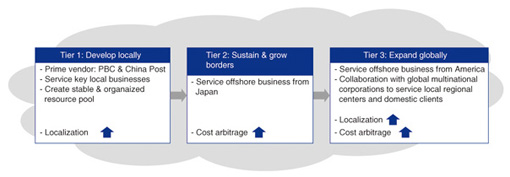
Fig. 6. Three-tier approach of NTT DATA (CHINA).
2. Service offerings
NTT DATA (CHINA) leverages the expertise of the NTT DATA Group as well as excellent local talent in China to provide world-class IT services. It has a wealth of enterprise application experience across different domains such as finance, manufacturing, retail, transportation, public administration, and utilities. It has been one of the leading providers in China with its outstanding IT services and solutions including business consulting, software development, and application management outsourcing, system maintenance, and testing. For the last decade, it has earned an enviable reputation in the China IT services industry. Its services and solutions are built upon a solid foundation of business partnerships with clients and technical certifications (Fig. 7).
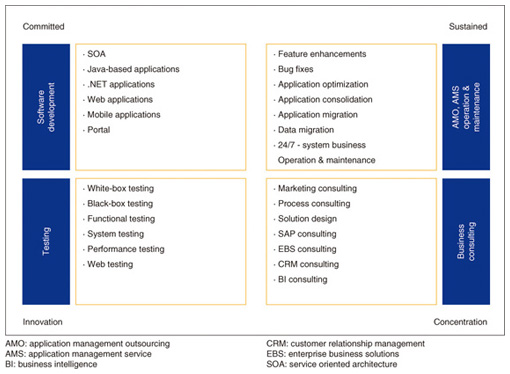
Fig. 7. Service offerings of NTT DATA (CHINA).
2.1 Consulting service
NTT DATA (CHINA)’s professional consulting team works together with clients to create business value and process solutions; its clients include both local and global clients in China. The consulting service includes business consulting (or process consulting) and IT consulting (or technical consulting). The business consulting focuses on finance, transportation, retail, and manufacturing, especially for the automotive and pharmaceutical industries. The IT consulting focuses on enterprise resource planning (ERP) (for SAP, Microsoft Dynamics ERP, and Oracle’s e-business suite (EBS)), customer relationship management (CRM) (for Oracle’s Siebel CRM and Microsoft Dynamics CRM), business intelligence, and workflow systems (e.g., IntraMart).
2.2 Industry solutions service
NTT DATA (CHINA)’s solutions team provides best-practice and convincing solutions to help local Chinese clients build up satisfactory systems with low risk, such as credit settlement solutions, credit assessment and risk management systems, bridge realtime monitoring systems, and intelligent transportation systems.
2.3 Outsourcing delivery service
NTT DATA (CHINA)’s outsourcing delivery center provides the following services.
2.3.1 Software development service
The global team of experienced project managers, experts, and engineers can create a custom application, solution, or architecture to meet a client’s business needs and help the client differentiate its company within the industry. The team has a wealth of enterprise application experience across different domains such as finance, insurance, telecommunications, logistics, retail, public administration, and utilities.
2.3.2 Application management outsourcing service
The application management outsourcing (AMO) service takes over management, development, and maintenance of IT applications for clients. The team uses a scalable staffing approach to meet the specific needs of each client. This service lets clients focus on more critical business areas and consequently develop a sustainable advantage in the marketplace. The professional employees are fully skilled in most of the popular programing languages, such as Java, VB.net, C#, VB, C/C++, COBOL, and ABAP.
2.3.3 Testing service
The professional testing team enhances the effectiveness of any product development process and the accuracy of the final product. The testing services span various testing techniques, platforms, and industries. Our functional testing includes unit testing, integration testing, system testing, regression testing, and acceptance testing, and our non-functional testing includes performance testing, security testing, stability testing, usability testing, and localization testing.
2.3.4 System operation and maintenance service
A non-stop operation and maintenance service (including system operation & maintenance and business operation & maintenance) is provided 24 hours a day, 7 days a week (24/7) with high efficiency and safety in order to help improve the business of our clients.
3. Future perspective
Besides expanding its existing offshore business, NTT DATA (CHINA) will also concentrate on expanding local Chinese business by collaborating with NTT DATA Group companies with a global vision. NTT DATA (CHINA) will continue to leverage the Group’s expertise as well as local excellent talent in China to provide world-class IT services for both local Chinese clients and global clients in China (Fig. 8).
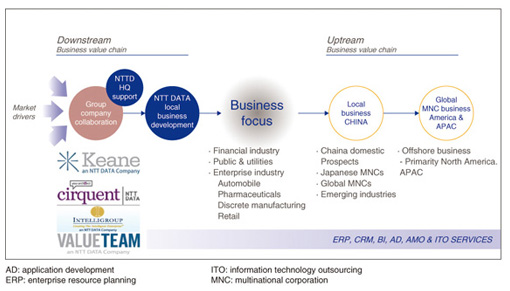
Fig. 8. Business focus of NTT DATA (CHINA).
References
| [1] | Shanghai NTT DATA Synergy Software Co. Ltd. www.synesoft.com.cn |
|---|---|
| [2] | Shanghai Intelligence Consultants Co. Ltd. www.itelligence.cn |
| [3] | NTT DATA Hangzhou Co. Ltd. www.xihu-nttdata.com |
| [4] | NTT DATA (CHINA) Co. Ltd.
http://www.nttdatabj.com.cn/english/ |
| [5] | NTT DATA BEEN (CHINA) Information Technology Co., Ltd.
www.nttdata-beenchina.com |
| [6] | Intra-mart Shanghai Co. Ltd. www.nttdatash.com.cn |
| [7] | Yuxin Data Co. Ltd. www.yuxindata.com |
| [8] | Tianjin NTT DATA Co. Ltd. www.nttdatatj.com.cn |
| [9] | Wuxi NTT DATA Co. Ltd. www.wxhx.com |
NTT DATA (CHINA)—short column
Alcoholic beverages have a long history of more than five thousand years in China. They play a major role in etiquette. For several thousand years, however, the functions have also included drinking to bring joy, forget worries, and boost one’s courage. People communicate and get to know each other by sitting together and drinking alcoholic beverages.
Traditional Chinese alcoholic beverages are classified mainly into three categories: white liquor, yellow liquor, and rice wine. White liquor, which is the strongest one, is the traditional distilled alcohol. It is made from various ingredients rich in starch like grains and potatoes through complex fermentation and distillation. Chinese white liquor often contains over 40% alcohol and is widely produced around the country in places like Sichuan, Guizhou, and Shanxi. The most well-known Chinese white liquors include Maotai Liquor, Five Grain Liquor, and Xifeng Liquor. White liquor is indispensable at banquets, especially in northern China. White liquor with 67% alcohol is also popular at banquets even in summer.
Ganbei is a kind of traditional way of drinking from ancient China, which means downing in one gulp a small cup of alcoholic beverage with a partner. Generally speaking, friendship could not be established until both parties had shared a drink together. Recently, this kind of custom has become less and less common, but it is being kept in our company: sometimes three cups one after the other act as a welcome for building closer relationships in a moment. Of course, people who do not wish to drink are never coerced, but everybody should take a sip or partake within their own limits. Japanese people often are very surprised and confused the first time they encounter this custom, but most of them become fond of it. People say what they really think after a few drinks—it is well known that alcohol lubricates social interaction—so they can establish close communication even within one day. Of course, anyone who overindulges and gets drunk is well looked after.
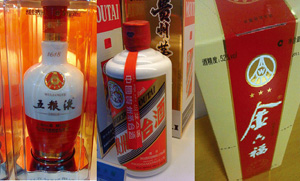
Besides white liquor, water melon juice is also very popular at banquets across the country even in winter. Most Japanese have eaten water melon but have not had the experience of drinking its juice; it is a kind of unimaginable beverage for Japanese, but delicious after you get used to it. Slices of water melon are also served as dessert at the end of a dinner.

Motor scooters are very popular in Beijing. It was reported in Japan five or six years ago that Beijing’s roads were crowded with bicycles, but the number of bicycles is declining and scooters are becoming more and more numerous instead. These scooters are quite different from the electric bicycles becoming common in Japan. They are dangerous because they are faster and quiet even when nearby, so foreigners who are not used to scooters need to be careful when walking along the roads.
Anyway, we are enjoying living in China and enjoying Chinese culture, and we hope that more and more of our colleagues from around the world will come here to work with us and enjoy Chinese culture.
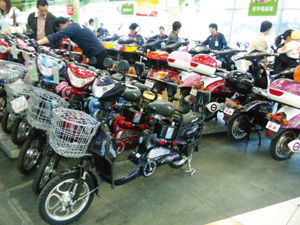
Kosuke Yuasa, Management Director,
NTT DATA (CHINA) and
Akihiko Toshikiyo, Vice President,
NTT DATA (CHINA)








